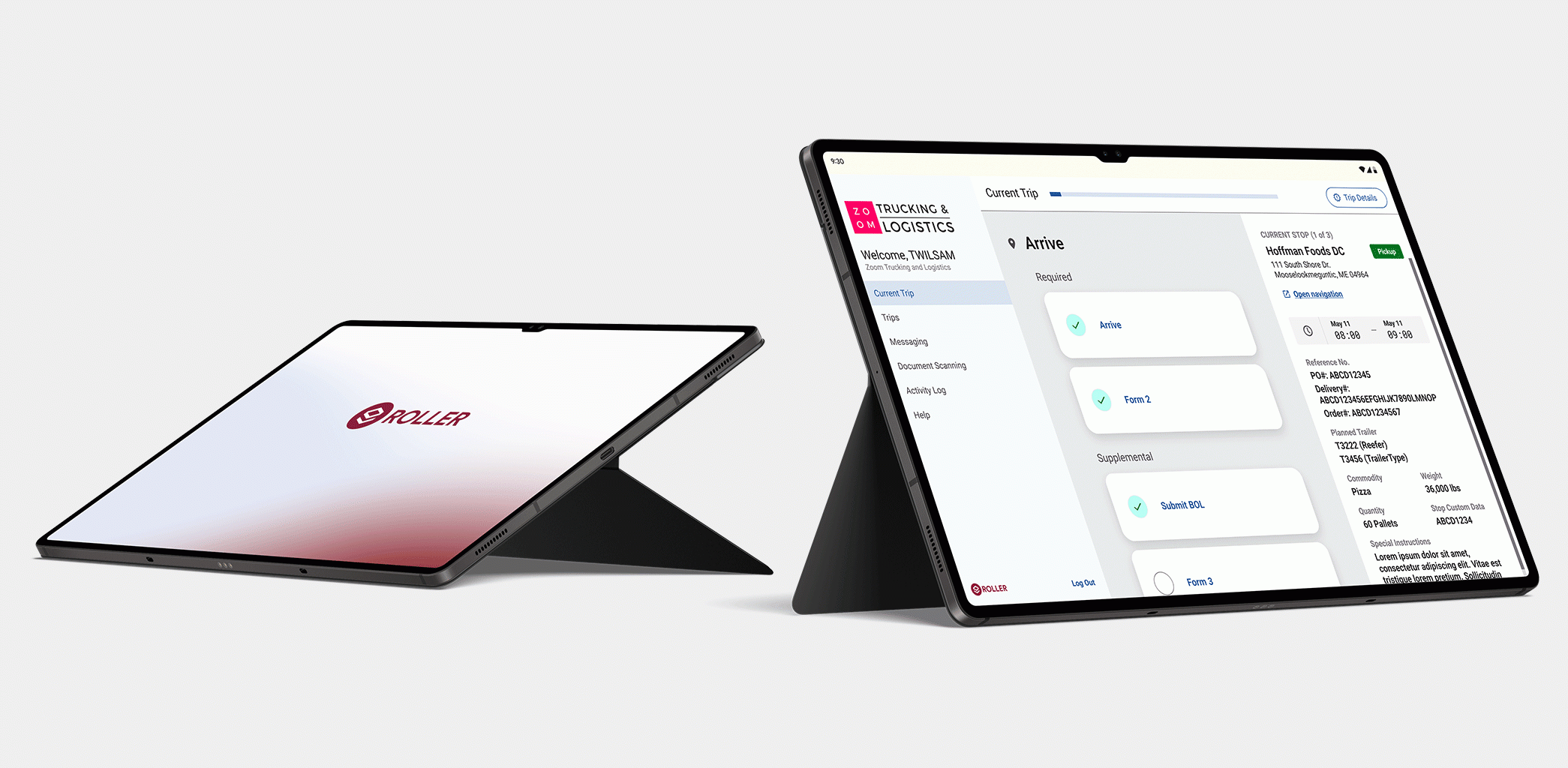It’s easy to forget that mobile devices as we now know them have barely existed for a decade, considering how ubiquitous they are.
According to Pew Research, 81% of US adults own smartphones—including 96% of 18-29-year-olds and 96% of 30-49-year-olds. In 2018 the number of “smartphone-dependent” US adults reached 20%—that is to say, adults who relied on smartphones as their primary source of internet connectivity. According to Tech Times, 3.5 billion smartphones are in circulation globally.
The importance of mobile apps has marched hand-in-hand with the importance of the devices themselves. Tech Times notes that of the 2.7 hours per day consumers spend on smartphones, 86% of that time is spent on apps.
Transportation tech company IDOT notes that customers tend to download free mobile apps and spend twice as much time on them as a browser website.
The mobile app market is expected to reach $407.31 billion by 2026, with a CAGR of 18.4% from 2019 to 2026, according to Allied Market Research. Since the announcement of the concept by the then-CEO of Google in 2010, we now live in a world of “Mobile First” design, where tech giants will consider their mobile digital experience before their large-screen experience as a matter of best practices.
It’s hard to think of a comparable market segment, which has become so important over such a short period of time. The consequence—mobile app development is a comparatively young tech segment and still in its growing pains. Developers gain new insights about user behavior every year.
The result is a tech segment in a constant state of flux. Yesterday’s best practices are today’s old hat. If you want to compete in the mobile app space, you have to stay on the cutting edge to remain among the best mobile app developers. The alternative is to be nowhere at all.
So what’s coming next? Here are eight mobile app development trends to watch for in 2021.
Mobile App Development Trend 1: AI and the Acceleration of Data-Driven Products
Artificial Intelligence (AI) technology continues to leap forward in gigantic strides. No longer locked behind a velvet rope, powerful AI tools like machine learning, computer vision, image and video processing, and natural language processing (NLP) enjoy widespread accessibility in every tech arena.
This is perhaps most visible in medical technology. The time-to-development cycle of a new pharmaceutical is usually ten years, the price tag $2.6 billion on average. InSilico, in partnership with the University of Toronto, innovated a new drug for tissue scarring in 46 days with the help of machine learning.
Even more dramatically, two major pharma companies developed vaccines for the deadly SARS CoV-2 (“new coronavirus”) less than a year after the viral genome was made public—an unprecedented speed of development, again aided by machine learning.
AI continues to acquire the capacity for higher and higher functions. Humans coexist and collaborate with AI helpers more and more, often in ways they don’t even realize. Curing deadly diseases is really just the beginning. An incomplete list in which AI will drive the future of mobile app development would include:
Data-Driven Development. Apps that start with assumptions are risky propositions. Apps that start with data analysis tend to do better. Apps have attempted to use data as their guiding star for years, iterating digital products through multiple gauntlets of customer feedback.
The hallmark of machine learning is that it can perform data-driven tasks better than any one human can. It would take centuries for one human to process the volume of data that today’s ML can process in minutes. Easy access to fast data analysis can help developers design better products through fewer iterations.
Real-Time Personalization on the “Edge.” Web apps like Amazon, Alibaba, and Google built their reputations on real-time personalization—as fast as you can input data, these apps personalize your experience. The democratization of AI tech means that more and more apps will mimic this effect, from personalized searches to product recommendations to customer journeys.
Most AI personalization takes place in the Cloud, but in 2021 app developers will start relocating AI algorithms to take place in the device itself—known as “the Edge,” as opposed to the Cloud—as a native function of the app, enabling personalization that doesn’t depend on Cloud connectivity.
Human-AI Cooperation. In 2021 it will become increasingly normal to have AI interactions as a part of day-to-day life. Whereas chatbots seemed invasive in their infant years, expect users to become more willing to interact with them as they evolve to become more helpful and “lifelike.” Chatbots and other human-AI cooperative interactions have only just scratched the surface of their ability to streamline users’ daily lives.
Mobile App Development Trend 2: The Rise of Voice as an Interaction
People have been talking into phones for decades. When the “Mobile First” transition made mobile devices more relevant than personal computers, you can imagine a marketplace that was begging for voice interaction.
The rise of smartwatches and other wearables made this development even more inevitable, inspired by devices from spy movies. If you could talk to a phone when someone was on the other line, why not talk to it when no one was on the other line … except for installed software?
Voice-activated mobile assistants like Apple’s Siri, Microsoft’s Cortana, Amazon’s Alexa, and Google Assistant have become household names—and, in the case of smart home enthusiasts, de-facto family members.
Dragon by Nuance claims up to 99% accuracy in its industry-leading voice recognition algorithm. In 2021 we expect more and more apps for the smartphone, tablet, or smartwatch to skip the mobile touchscreen interface altogether, relying on voice-activated APIs made available to developers by top distributors, including:
- Siri Shortcuts, for iOS developers.
- Google Cloud Text-to-Speech API, available in 14 languages with 31 variants.
- Azure Speech APIs, which includes Bing Speech, Speaker Recognition, Custom Speech Service, and Translation Speech.
- Amazon Transcribe, a speech-to-text API available in English and Spanish.
It’s worth noting that, as was the case with the rise in smartphones, this market is highly fragmented as different companies vie for user share. For a seamless experience, this pushes customers towards “picking a team”, for example, an Amazon Echo won’t deliver the same functionality as Siri depending on what devices you are using
Mobile App Development Trend 3: Augmented Reality Makes the Leap
Proposed as early as the 1960s, Augmented Reality (AR) has been a long time coming. It has only become practical in the last few years.
In the last few years, mobile processing power, small-device storage capacity, and ubiquity of access to Cloud data have finally caught up with the AR dream. Look for an explosion in its popularity as enterprises and mobile app developers come to terms with its power.
Distinct from “Virtual Reality (VR),” AR creates an interactive experience by adding computer-generated content to the surrounding environment, elevating and gamifying a user’s surroundings. It does this with a combination of visual tracking, inertial tracking, and sensor net tracking to perceive the environment and incorporate images, sounds, and other sensory experiences.
Here are some areas where we’re starting to see app developers adopt AR for mobile applications that expect to see an even bigger uptick in 2021:
Education. Groundbreaking apps use AR to add educational content to the surroundings. Shapes is an app that helps grade-school children learn geometry by animating 3D shapes onto nearby surfaces, while Nano Simbox uses 3D renderings to illustrate how molecules interact within the surrounding environment.
Home Design. AR has obvious implications for home design. After all, you don’t have to wonder if a carpet or piece of furniture will fit with your decor or into the available space when you can conjure a virtual version of the piece into the space before you buy. The Kavtek app is becoming especially popular among real estate agents. It allows potential buyers to swap the flooring, paint the walls, swap appliances, and add furniture to a vacant home, helping them feel a sense of ownership of the property before they buy.
Marketing. The ARILYN App allows users to harness the industry-leading Arilyn Manager platform to add custom AR to an environment, no coding necessary. Marketing professionals are chomping at the bit to festoon the virtual world with AR marketing messages, or add a layer of tech-forward AR excitement to a promotional event.
Luckily for mobile app developers and their clients, incorporating AR into their custom applications is easier than ever. Apple has made their iOS framework ARKid available to developers, while Google has done the same with their own ARtoolkit, Android Things.
Mobile App Development Trend 4: Investment in IoT Picks Up
Non-computer devices have been connecting to the internet since the 1990s. You could argue that the Internet of Things was born at that time, but Cisco Systems defined the “Internet of Things” (IoT) as existing once there were more objects connected to the internet than there were people connected to the internet.
The things/people ratio exploded from 0.08 in 2003 to 1.84 in 2010, so the Cisco-defined IoT came into being around 2010. Every device that connects to the internet adds to the IoT.
It’s adding up fast, too. According to Mordor Intelligence, the global IoT industry is expected to surpass $1.26 trillion by 2025, at a CAGR of 10.53% between 2020 and 2025. From WiFi-enabled light bulbs to implanted cranial EEG readers, there are currently about 7 billion IoT devices connected to the internet—soon to surpass the number of people on earth, let alone people connected to the internet.
Every new IoT device will need an app to interface with it. After all, that lightbulb is useless without an app to turn it on; the EEG useless without an app to read it. A huge segment of the mobile app development industry will devote itself to designing the apps humans need to interact with this ballooning IoT.
As a result, developers are rallying behind a set of best practices around IoT app development, including:
Consider the Requirements. Device designers often pack their ideas with features. Developers should take note of these features and build it into the app requirements, but depending on the product strategy, the first iteration might not have all these features yet. Developers often focus on creating a minimum viable product (MVP) to bring to market, saving ancillary features for later iterations.
Focus on the User, not the Product. Developers have shifted from a “product-centric” design ethic to a “user-centered” design ethic. This means considering UX in advance and incorporating as much user feedback as early in the process as possible.
Attention to Integration. IoT devices are integration-intensive, with hardware, an operating system, network connectivity, and protocols to balance. Seamless integration is necessary for at-will interaction between the app and the device, a key challenge that app developers must approach fresh with each new app.
Address Extensibility. Consider changes the device might undergo in the future, or at least allow for the possibility of changes. Some mobile app developers use hybrid code to save money in the early stages, but this could lay the groundwork for expensive custom code updates as the device evolves. Native code, while more expensive and expert-intensive up front, is much easier to change and iterate.
Go Agile. Agile development methodology has its detractors, but to develop mobile apps for IoT devices it is really the best choice. Agile allows developers to quickly create an MVP, bring it to market, and collect the feedback needed to improve it.





